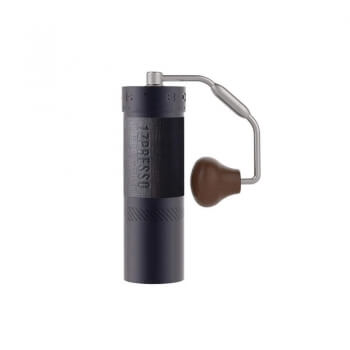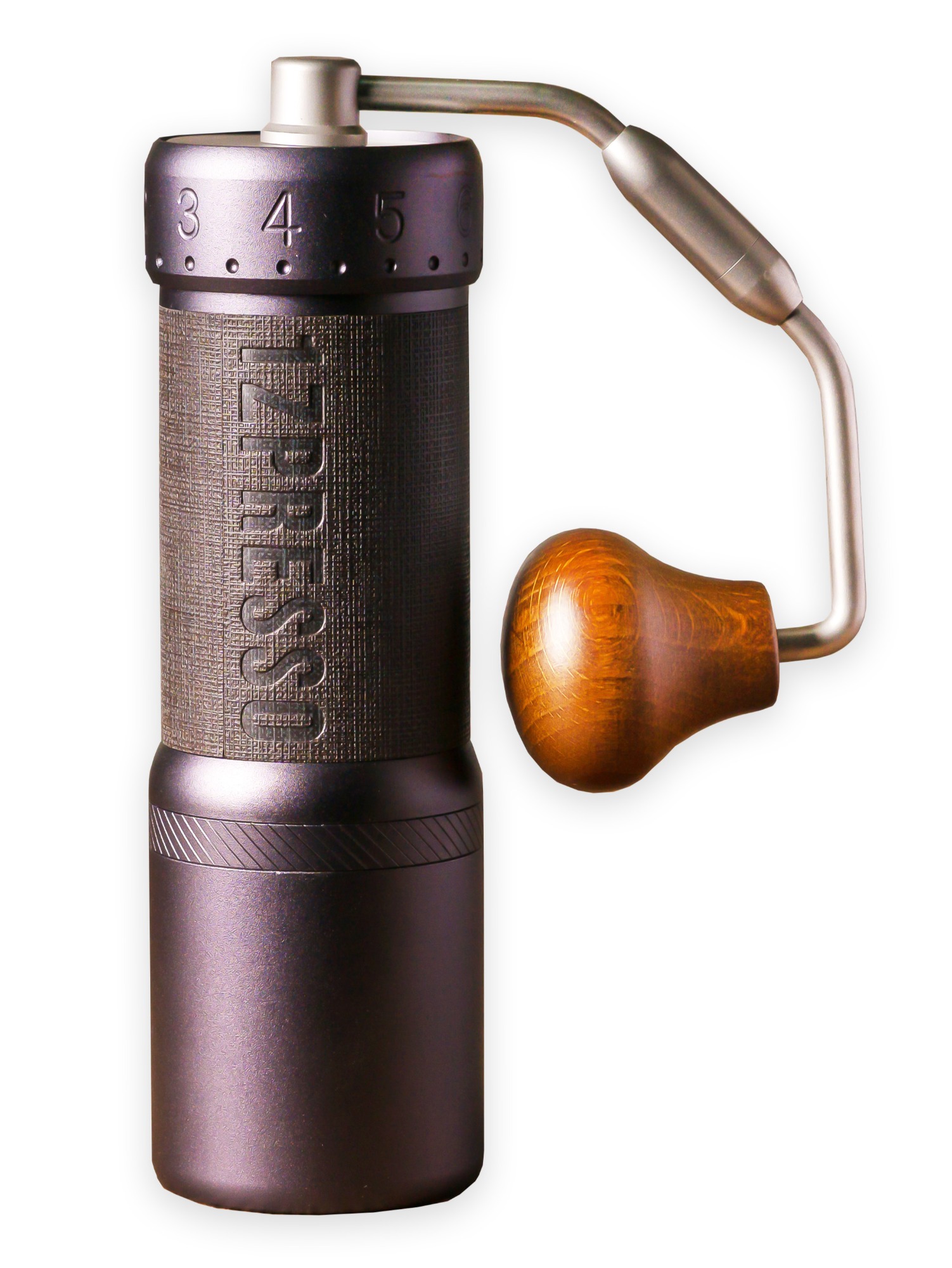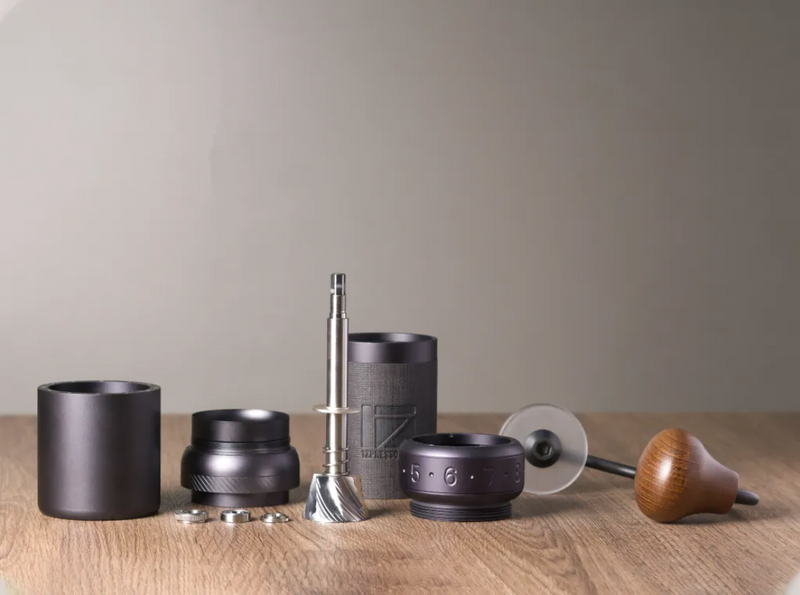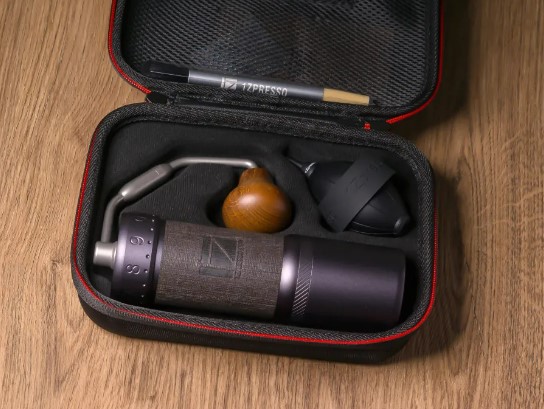The Ultimate Grinding Companion: 1Zpresso J-Ultra Coffee Grinder
The Ultimate Grinding Companion: 1Zpresso J-Ultra Coffee Grinder
Blog Article
Master the Art of Grinding Coffee Beans: A Guide to Coffee Grinders
For coffee lovers, the process of grinding coffee beans is more than simply a regular task; it is an art form that can greatly affect the taste and top quality of the last brew. Coffee grinders play a crucial duty in this delicate process, yet understanding their usage includes greater than simply pushing a button. Understanding the subtleties of various mill types, choosing the proper grind size, and utilizing the right techniques are essential actions in the direction of attaining that perfect cup of coffee. Nevertheless, the trip in the direction of coming to be a coffee grinding maestro doesn't end there. As we discover the details of this craft, we will certainly reveal upkeep keys, repairing tips, and more, all aimed at elevating your coffee experience to new elevations.
Kinds Of Coffee Grinders
There are three main kinds of coffee grinders generally utilized by coffee lovers: blade mills, burr grinders, and hand-operated grinders. Blade mills are the many basic type, using a straightforward blade to slice the coffee beans. While they are cost effective and very easy to make use of, they usually result in uneven coffee grounds due to inconsistent grinding.
Hand-operated grinders, as the name suggests, need manual effort to grind the coffee beans. They are typically chosen by those that appreciate the process of hand brewing coffee or for those that value transportability. Hands-on grinders can differ in style, from easy portable models to much more elaborate counter top variations. While they might call for even more initiative, hands-on grinders use control over the grinding process, allowing customers to readjust the work size to their preference. Each kind of coffee mill has its advantages and ideal use instances, providing to the varied choices of coffee enthusiasts.

Selecting the Right Work Dimension
With an understanding of the various sorts of coffee grinders, the next essential step in accomplishing the excellent mug of coffee is picking the best grind size. The work size plays a considerable function in establishing the taste profile of your coffee (1Zpresso J-Ultra). Different developing approaches call for details grind dimensions to optimize the extraction of flavors from the coffee grounds
For a rugged grind, ideal for French press and cold mixture approaches, the coffee beans must resemble breadcrumbs, providing a durable and vibrant taste. Medium-coarse grinds, appropriate for Chemex or Clever Dripper, have a structure similar to rugged sand, supplying a well balanced taste.
Tool grinds, frequently utilized in drip coffee machine, have a consistency looking like regular sand, leading to an all-around taste. Great grinds, best for espresso makers, are akin to salt, generating an abundant and extreme taste. Finally, extra-fine grinds, used in Turkish coffee, are as great as powdered sugar and generate a solid and potent mixture.
Grinding Strategies for Optimal Flavor
To extract the max capacity of taste from your coffee beans, understanding appropriate grinding strategies is vital. Consistency is crucial when it involves grinding coffee beans for optimum taste. Ensuring that the coffee beans are ground evenly is important to accomplish a balanced extraction during the brewing process. One of the fundamental techniques for enhancing taste is to readjust the work dimension based on the developing approach being made use of. For instance, a great work is excellent for coffee machines, while a rugged grind is much more appropriate for French press developing. Furthermore, the grinding time plays a substantial function in flavor my sources removal. Over-grinding can lead to a bitter taste, while under-grinding may result in a sour taste. It is recommended to experiment with different grind sizes and developing times to discover the perfect equilibrium that fits your taste preferences. By taking note of these grinding techniques, you can boost the flavor account of your coffee and take pleasure in a more rewarding mug whenever.
Maintenance and Cleansing Tips

Replace any type of more helpful hints damaged components quickly to maintain the quality of your coffee grind. By complying with these maintenance and cleansing pointers, you can guarantee that your coffee mill proceeds to deliver tasty fresh ground coffee for years to come.
Troubleshooting Common Mill Issues


Ensuring your coffee mill functions smoothly requires experienced troubleshooting of usual problems that may emerge during its use. One usual problem with coffee grinders is inconsistent work dimension. This concern can take place because of boring blades, improper calibration, or unequal coffee beans. To resolve this, ensure your grinder's blades are sharp and correctly straightened, adjust the grinder according to the desired work dimension, and tremble the mill delicately while being used to aid achieve an extra uniform grind.
Another regular concern is grinder obstructing. This can occur when oils from the coffee beans accumulate and obstruct the grinder's chute. To solve this, take apart the grinder and tidy all parts extensively, paying special focus to the chute and burrs. Furthermore, be mindful of overfilling the hopper to prevent obstructions.
Last but not least, if your mill is generating excessive noise during procedure, it might indicate an issue with the motor or inner components. In such situations, it is recommended to consult the maker's instructions for fixing actions or seek specialist assistance to identify and rectify the problem promptly.
Final Thought
In conclusion, grasping the art of grinding coffee beans entails comprehending the various types of coffee mills, choosing the best work size, using proper grinding strategies for optimal taste, and maintaining check out here and cleaning the mill routinely. By following these standards and fixing usual mill problems, coffee lovers can raise their coffee brewing experience and delight in a tasty mug of coffee every single time.
Report this page